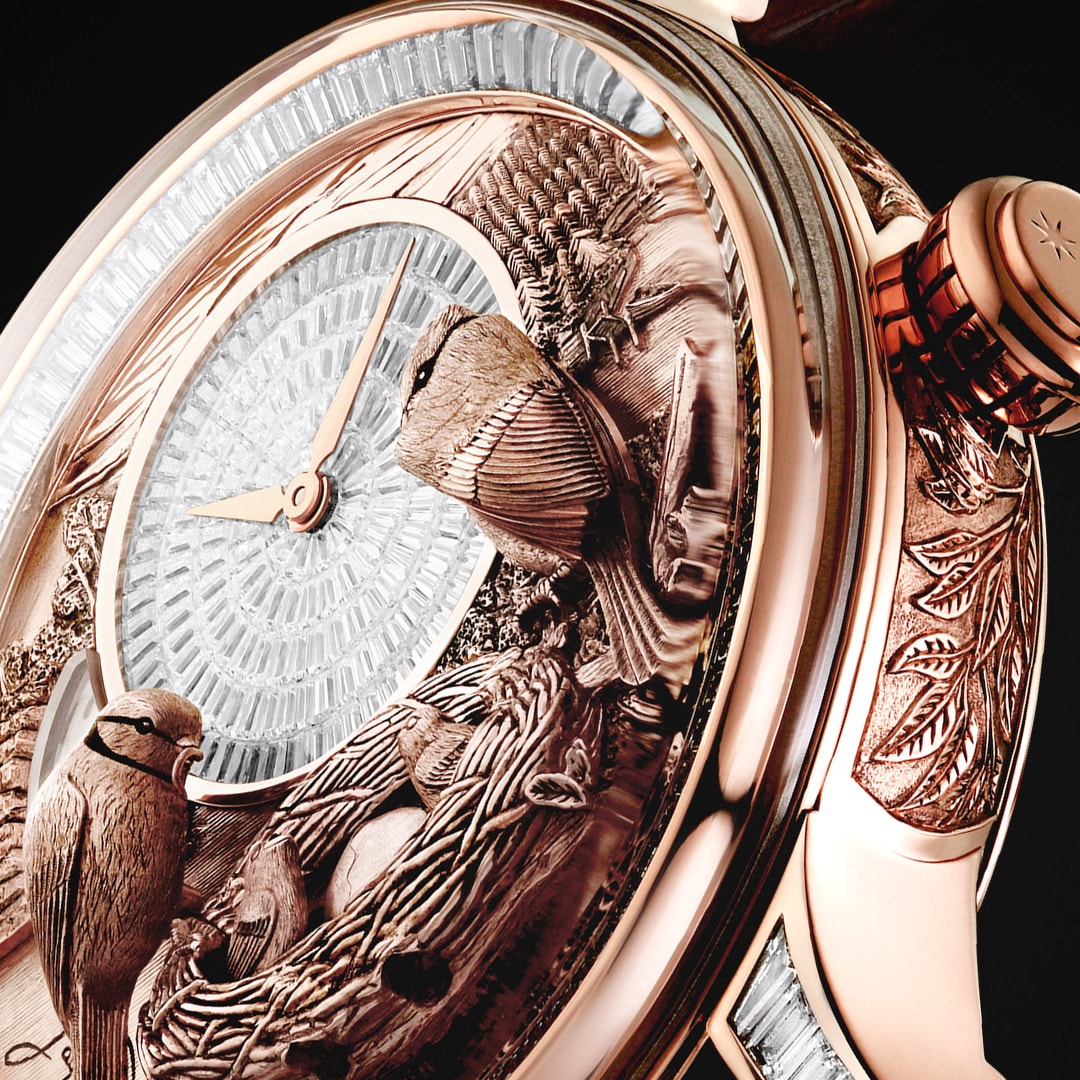Jaquet Droz brings
the watch dial to life
As a company with archives dating back to 1738, Montres Jaquet Droz is among the elite Swiss heritage watch brands, but it has always been far from traditional. Founder Pierre Jaquet Droz specialized in the rare art of automata. It wasn't enough for him to tell the time; he wanted to do it splendidly and dramatically, by creating mechanized objects that were engineered to move or play music. They also had to look spectacular while doing it. It was disruptive and visionary at the time, and even now remains a unique niche within the luxury watchmaking world.

Pierre Jaquet-Droz was born in 1721 on a small farm in La Chaux-de-Fonds, so it comes as no surprise that he had close relatives working in the watch industry. Under their tutelage, he took a serious interest in clockmaking and precision mechanics from an early age. He is said to have had "manual dexterity, a meticulous nature and a firm grasp of mechanical principles."
The young Jaquet-Droz produced increasingly sophisticated movements, eventually setting up shop in Neuchâtel, where he settled on his speciality of creating music boxes and automata. He is mostly remembered for a particular trilogy of near life-sized humanoid automata, which he presented in 1774 to the amazement of connoisseurs worldwide • in today's terms, they would have gone viral. They included: The Writer, who dipped his quill into a pot of ink and proceeded to write messages on a piece of paper; The Draughtsman, who drew architectural designs with mathematical precision; and The Musician, who played music with a mechanism consisting of a fusée-and-chain winding system, a cylinder with pins that contained a musical score, and a system of a bellows. They were so lifelike that some accused Jaquet-Droz of witchcraft!
They caught the attention of European royalty and members of the aristocracy, which did wonders for the business. Pierre and his son, Henri-Louis, and his partner, a talented watchmaker named Jean-Frédéric Leschot, exhibited their creations to the royal courts of Europe, beginning with Ferdinand VI of Spain, and King Louis XVI of France and his queen, Marie-Antoinette. Soon, Jaquet-Droz pieces were in demand across Europe and as far away as Russia and China. By 1783, Jaquet-Droz opened an office in London, and a year later established an outpost in Geneva.
As time went by, these whimsical objects became more and more sophisticated both technically and decoratively, and eventually the techniques developed in the Jaquet Droz workshops were transferred to the company's wristwatch collections. Jaquet Droz thus became a leading practitioner of watchmaking's metiers d'art • grand feu enameling, engraving, miniature painting and marquetry • the crafts and finishing techniques that distinguish good watchmakers from outstanding watchmakers. In keeping with its heritage as a maker of automata, many of the company's modern watches include jacquemarts, mechanical animations in three dimensions, a speciality that very few watchmakers pursue today. Here are some examples:
The Rolling Stones Automaton, with a reproduction of the Stones stage set, with Ronnie Wood's Fender Strat guitar, the drums of Charlie Watts, and Keith Richard’s famous five-string guitar, as well as Mick Jagger's harmonica.
The Dragon Automaton, with an 18k gold, hand-engraved sculpture of a dragon programmed with nine animations: the crest moves, the mouth opens, the tongue comes out, the eye opens and closes, the dorsal section and tail undulate, the dragon's foot moves up and down towards the ball and the ball spins on itself.

The Bird Repeater, with hand-painted and hand-engraved white gold bird automatons, and a minute repeater movement. On demand, the male bird's wings spread, and the mother bird feeds her hungry chicks.

The Charming Bird takes the concept a step further, with a singing bird animation, a state-of-the-art version of one of Pierre Jaquet-Droz's most important masterpieces, with a modern bellows, cylinder and pin system.

The Loving Butterfly Automaton is a gold engraving of a cherub seated in a chariot pulled by a butterfly. When activated, the butterfly's wings flutter and the wheels of the chariot turn.

The Whistling Machine is a modern interpretation of the automaton mechanism. The mechanism can be viewed through its sapphire crystal case, a tribute to the technical dexterity of Jaquet Droz.